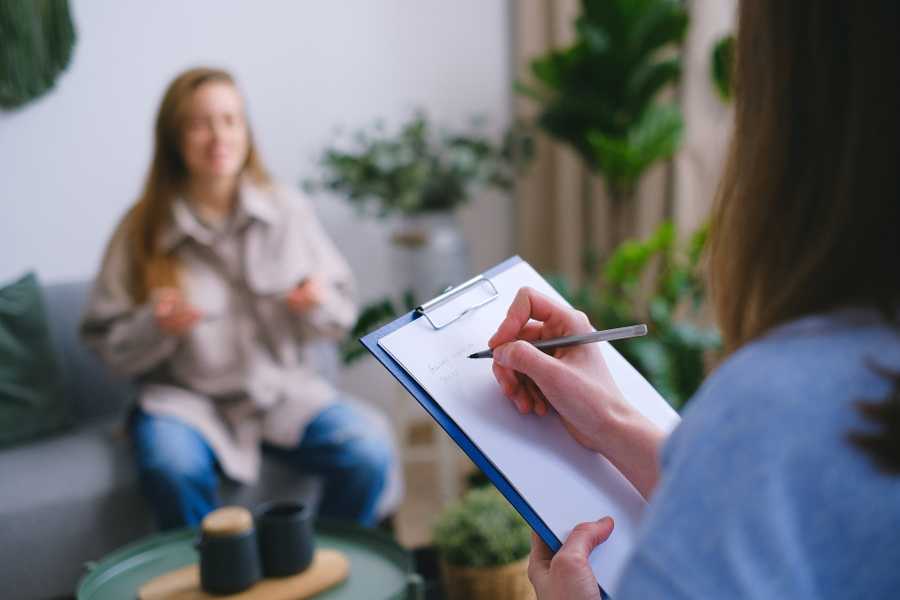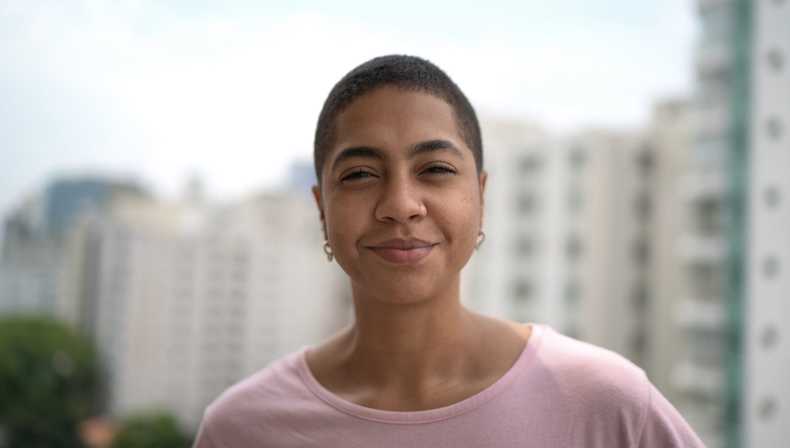Reporting practices
It is against the law to try to change or suppress someone’s sexual orientation or gender identity, even if they ask for help to do this.
Reports about change or suppression practices can be made to the Commission and may lead to facilitation between the people involved, targeted education or further investigation.
Our processes are flexible, trauma-informed and designed to be fair to all people involved.

What is a change or suppression report?
A report identifies a person or an organisation who has allegedly tried to change or suppress an individual’s sexual orientation or gender identity. A report may be made by the person affected, someone on their behalf or any other person.
A report is made with the intent to:
- show the harm of these practices
- have the story of the person(s) affected heard
- seek an outcome (facilitation, education, or investigation)
- stop these practices from happening.
A report, made using our form or over the phone (1300 292 153), requests the following optional information:
- the reporter’s name and contact details
(this is optional: reports can be made anonymously. We are limited as to how we can progress anonymous reports, but they will be valuable information for our research and other investigations) - an outline of the reporter’s story – guided by what they feel comfortable sharing
- the person or organisation the reporter says has engaged in the change or suppression practice
- what outcome is sought (facilitation, education, or investigation).
We welcome a phone call (1300 292 153) for a confidential chat about the reporting process.
We can work with reporters and support them when they are deciding whether to make a report. This includes helping them to complete a report or assisting them to access a support service if needed. We will provide a safe environment for reporters to tell their story and provide the time they need to consider whether they wish to make a report.
Who can make a report?
Anyone can make a report to the Commission about an alleged change or suppression practice. A reporter could be:
- the person affected – the survivor of change or suppression practices
- someone on behalf of the survivor (like a family member or friend)
- any other person (for example, someone who has overheard or witnessed a change or suppression practice).
What happens after a report has been made?
We will determine the most appropriate response to a report depending on the information available. Any response or action will always consider the wishes and needs of the person affected. We may request further information from the reporter or the reported party to assist in determining our response to a report.
A reporter can request the following outcomes of their report:
There may be instances where it may be appropriate for us to refer a change or suppression practice report to another organisation. This would only occur with the affected person’s consent. This could include:
- Victoria Police: when a change or suppression practice results in injury or serious injury, and/or if someone is taken out of Victoria for the purpose of a change or suppression practice and/or for advertising a change or suppression practice
- Health Complaints Commissioner: when a report includes a registered health provider (like doctors, psychologists, and psychiatrists) or non-registered health provider (such as counsellors and homeopaths)
- Australian Health Practitioner Regulation Agency: when a report includes a registered health provider based outside of Victoria
- Victoria Ombudsman: when a report includes a Victorian public authority (including Government departments, local councils, state schools, universities and TAFEs, prisons, or certain professional boards).
What happens during a facilitation process?
We provide a fair and safe space for all parties so that the affected person’s story can be told, understood, and responded to.
Facilitation processes are voluntary and confidential. We offer two types of facilitation:
Throughout both processes, we will:
- provide expert knowledge of the Act
- make regular contact and explore needs of both parties
- ensure everyone is prepared for facilitation, including accommodating any adjustments a person may require
- ensure the parties consider being supported during the process. The support could be provided by a friend, family member, advocate, or lawyer.
What are the possible outcomes of facilitation?
The facilitation process aims to reach a resolution that is agreed upon by both parties. Outcomes of facilitation could include:
- a commitment from the reported party to change or stop behaviour
- the reported party undertakes to accept a targeted education program
- an apology
- financial compensation.
How we work with people affected by change or suppression practices
The potential responses to reports are all trauma- and survivor-informed to accommodate the unique circumstances of each person’s experience.
We will work closely with the person or people affected and the reported party to ensure that any response is appropriate, fair, and consistent with the objectives of the Act.
We will always:
- provide a safe space for all parties so that the story of the affected person can be told and understood
- provide choices in each step of the process
- assist the affected person to receive the support they need by referring them to appropriate support services with their consent
- set up facilitation processes which meet the needs of the individual person affected
- support individuals who have been the victims of a criminal offence to report such conduct to police if they wish to do so.
We recognise that telling their story may be distressing and could cause further trauma for the affected person.
We will support these individuals to tell their story. The level of information provided is up to them and is guided by what they are comfortable with. We can reduce the need to re-tell their story and can relay it on their behalf if required.
How we work with the reported party
We maintain impartiality in our response to reports and the facilitation process and aim to provide fair services to everyone involved.
We will provide information about education and facilitation, the objectives of the Act, the meaning of change or suppression practices and how it relates to the report made, as well as the reported party’s possible vicarious liability.
We will work closely with the reported party to:
- prepare them for facilitation
- hear their views about the report made against them.
We can discuss any concerns that the reported party may have about their participation in a facilitation process.
Contact us
We are here to help if you have a question about the reporting process, including the sorts of responses we can consider.
Call us: 1300 292 153 (weekdays)
Email us: enquiries@veohrc.vic.gov.au
Support services
For those affected by change or suppression practices, retelling your story may cause you further distress. These organisations can help:
Rainbow Door is a free specialist LGBTIQA+ helpline providing information, support, and referral to all LGBTIQA+ Victorians, their family, and friends.
Contact: 1800 729 367 or 0480 017 246 (SMS) or support@rainbowdoor.org.au
Beyond Blue provides 24-hour information, advice and support for people affected by anxiety, depression, and suicide.
Contact: 1300 224 636
Australian GLBTIQ Multicultural Council is a national body that advocates for the rights of multicultural and multifaith LGBTIQ individuals and communities and provides referrals to existing services, community groups and agencies.
Contact: contact@agmc.org.au and their GLBTIQ multicultural directory lists Victorian groups such as Queer Muslims, Jewish and Gay, Gas Asian Proud, Club Adonis and more.
A full list of affirming faith organisations, LGBTIQ support organisations and crisis and mental health services can be found on our ‘Have you experienced a change or suppression practice?’ page.
Reported parties will be referred to independent legal advice through the facilitation process.





